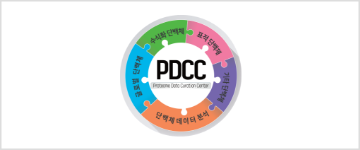2025 Fall
International Convention of PSK
2025 CONVENTION
Abstracts
Ligand-shape-based drug repurposing for discovering inhibitors targeting Hsp90 N-terminal domain and BRD4 bromodomain
- Jeong In Lee1, Rishiram Baral1, Gaurab Subedi2, Sung Jean Park*2, Jun-Goo Jee*1
- 1Research Institute of Pharmaceutical Sciences, College of Pharmacy, Kyungpook National University.
- 2College of Pharmacy and Gachon Institute of Pharmaceutical Sciences, Gachon University.
Drug repurposing offers a time-efficient strategy to discover new therapeutic uses for existing compounds. In this study, we applied ligand shape-based screening using ROCS to identify inhibitors of the Hsp90 N-terminal domain (Hsp90N) and the first bromodomain of BRD4 (BRD4-BD1), two clinically validated anticancer targets. Shape similarity searches against the IUPHAR ligand set prioritized compounds with non-canonical scaffolds, nine of which were selected for experimental evaluation. Among these, NKY80 and SB-415286 exhibited micromolar binding to Hsp90N and BRD4-BD1, respectively. Binding of NKY80 to Hsp90N was validated by fluorescence polarization (FP) assays (Ki = 7.1 µM), while SB-415286 binding to BRD4-BD1 was confirmed using an AlphaLISA assay (Ki = 20.3 µM). In both cases, 2D NMR spectroscopy revealed chemical shift perturbations near orthosteric binding sites, providing direct evidence of binding. Co-folding-based structure prediction using Boltz-2 and Protenix generated binding poses consistent with known crystal ligands, supporting their utility as complementary tools for exploring potential binding interactions. Together, our findings illustrate that shape-based screening can uncover repurposable inhibitors with distinct chemotypes, missed by conventional docking and fingerprint-based methods.
Q&A
- There are no registered questions









































